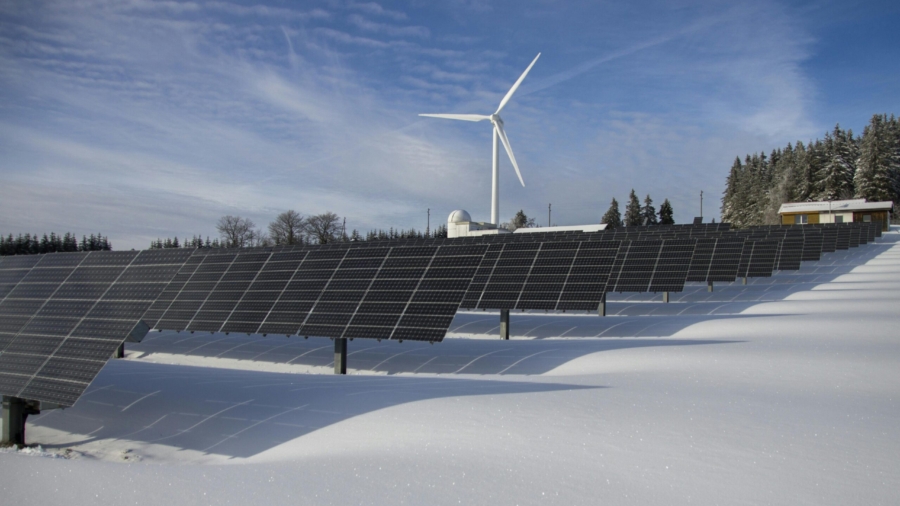Powering Europe’s Renewable Future
Europe’s clean-energy transformation is moving faster than ever. Wind and solar capacity are expanding across the continent, but the more renewables we add, the more we face a familiar challenge – how to balance an energy system that depends on the weather.
Energy storage has long been seen as the missing piece of the energy transition puzzle. Yet the future of storage lies not only in larger batteries or bigger reservoirs, but in the smart combination of multiple technologies that can work together, adapt to the grid, and deliver reliable power whenever and wherever it is needed.
That is the vision behind i-STENTORE, the innovative energy Storage TEchNologies TOwards increased Renewables integration and Efficient operation. Funded under the Horizon Europe programme and coordinated by European Dynamics Luxembourg SA, i-STENTORE brings together 25 partners from 11 European countries to demonstrate that hybrid energy storage systems (HESS) can become the backbone of a flexible, efficient, and resilient European energy system.
A Mission to Unleash Flexibility
Launched in 2023, i-STENTORE set out to create a technology-agnostic, interoperable ecosystem for storage. The project integrates electrical, thermal, mechanical, and chemical storage solutions into hybrid systems capable of performing a wide range of tasks – balancing grids, improving power quality, extending asset lifetimes, and reducing operational costs.
At the heart of i-STENTORE lies a Reference Architecture (RA) that defines how these different technologies, sectors, and market actors can interact seamlessly. This open, standardised framework supports not only interoperability but also the secure exchange of data across Europe’s energy value chain. By combining technical innovation with business-model development and policy dialogue, i-STENTORE seeks to make storage a true enabler of Europe’s climate neutrality goal.
Demonstrating Storage in Action: Five Pilots Across Europe
To prove that vision in real-world conditions, the project launched five large-scale demonstration sites – each representing a different geographical, technical, and market environment. Together, they cover a wide variety of every storage applications that Europe will need in the coming decades.
- Slovenia – Molten Glass Thermal Storage: At Steklarna Hrastnik, a leading glass manufacturer, i-STENTORE partners are integrating a molten-glass thermal storage system into an energy-intensive industrial process. By capturing excess renewable heat and reusing it during production cycles, the plant improves efficiency and reduces emissions. This pilot shows how thermal storage can decarbonise heavy industry while enhancing grid stability.
- Portugal – Pump Hydro Combined with Battery Storage: On Madeira Island, partners EEM and INESC TEC combine pumped-hydro storage with battery energy storage systems (BESS) to stabilise an isolated grid dominated by renewables. The hybrid configuration provides fast-response flexibility and long-duration backup, ensuring reliable power even when solar or wind generation fluctuates. It is a concrete example of how hybridisation increases system resilience in insular or remote areas.
- Spain – Virtual Energy Storage System (VESS): In Andalusia, Cuerva, Aggrega, and UC3M are building a digital twin of a storage network – a virtual power plant that aggregates distributed resources into a coordinated flexibility service. Through advanced data governance and semantic interoperability, this Virtual Energy Storage System allows small assets to act as one, participating in markets and supporting the local grid. It highlights the growing importance of digitalisation and data standards for managing flexibility-at-scale.
- Italy – Multi-Hybrid Storage for E-Mobility: In Milan and Naples, companies SAMSO, UNINA, and start-up REEFILLA demonstrate a modular hybrid system supporting electric-vehicle charging hubs. By combining fast-charging batteries, supercapacitors, and advanced control algorithms, the pilot enables energy-efficient, grid-friendly e-mobility. It also tests new business models, such as mobile energy storage for EV fleets, opening the door to flexible urban charging solutions.
- Luxembourg – Agri-PV with Hydrogen Storage: At a renewable farm in Luxembourg, Green Power Storage Solutions (GPSS) and LIST integrate solar PV, battery storage, and hydrogen production. This setup optimises self-consumption, enables long-term storage of renewable electricity, and links the energy and agricultural sectors. It is a first step toward sector coupling between farming, hydrogen, and power systems.
“i-STENTORE shows that flexibility is not an abstract concept – it’s a tangible, measurable capability that enables a renewable future.” Nikolaos Bilidis – Project Coordinator at European Dynamics.
What the Project Has Learned So Far
Across all pilots, one conclusion is clear: hybridisation multiplies value. By combining different storage technologies, i-STENTORE solutions achieve higher efficiency, lower costs, and greater reliability than any single-technology system.
Key findings from the project’s preliminary evaluation phase include:
- Improved flexibility: hybrid systems deliver both short-term and long-term balancing capacity.
- Enhanced power quality and resilience: fast-response technologies stabilise frequency and voltage in real time.
- Longer asset lifetimes: intelligent control reduces cycling stress and degradation.
- Economic viability: combining technologies and services creates multiple revenue streams, reducing the Levelised Cost of Storage.
- Scalability: the common RA allows replication in other contexts without starting from scratch.
Through the Virtual Power Plant (VPP) tool, developed by European Dynamics and partners, operators can supervise multiple energy storage assets from a single digital interface. This modular control platform provides real-time monitoring, health management, and predictive optimisation of hybrid systems.
From Pilots to Policy
Technology alone is not enough. For storage to play its full role, Europe needs supportive market and regulatory frameworks. That is why i-STENTORE’s work also extends into the policy and standardisation domains. Partners such as Regulatory Assistance Project (RAP), National Technical University of Athens (NTUA), and Luxembourg Institute of Science and Technology (LIST) are analysing how current EU and national rules treat energy storage – and how they can evolve to reflect its multi-service nature. The project contributes actively to the BRIDGE initiative and other European platforms, aligning its RA with established standards like CIM, IEC 61850, and SGAM. These efforts ensure that i-STENTORE outcomes feed directly into future European data spaces, interoperability guidelines, and market design discussions. In doing so, the consortium helps to bridge the gap between innovation and policy, turning pilot experience into actionable insights for regulators and investors.
Looking Ahead: Replication and Scalability
As i-STENTORE approaches completion in 2026, attention turns to replication and long-term impact.
The project’s upcoming Replication/Scalability Roadmap (D5.3) outlines how its solutions can be deployed across Europe – from island grids and industrial zones to urban energy communities. At the same time, partners are finalising the i-STENTORE Commercialisation Roadmap, identifying exploitation pathways, investment opportunities, and open-source components that can accelerate market uptake. The goal is clear: to ensure that the knowledge and architectures created within i-STENTORE continue to drive innovation long after the project ends.
“By combining technology, business, and policy, we’re creating the conditions for storage to become a cornerstone of Europe’s decarbonised energy system.” Ioannis Mandourarakis – Senior R&D at European Dynamics.
A European Collaboration for a Shared Goal
Behind every pilot stands a diverse and committed team of engineers, researchers, innovators, and policy experts working side by side across Europe. Their combined expertise covers the entire energy value chain – from renewable generation and advanced storage solutions to data analytics, grid operation, digital technologies, and business strategy. Together, they are demonstrating that Europe’s leadership extends beyond producing clean energy – it also lies in the intelligent, integrated, and sustainable management of energy storage.
Author(s): By European Dynamics Luxembourg SA – Coordinator of the i-STENTORE Project
Share now!

